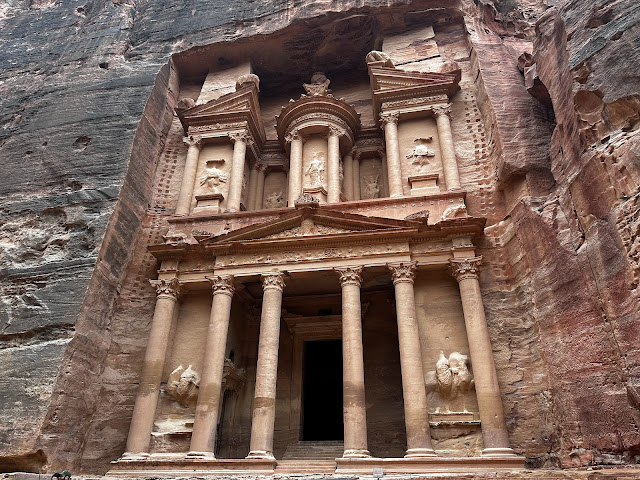Situated within the Petra archeological site in Jordan, The
Obelisk Tomb is a burial complex carved by the Nabataean civilization during
the reign of Malichus II, who was ruler of Nabataea from 40 CE to 70 CE.  |
A distant view of the Obelisk Tomb and the Triclinium
|
The structure
consists of two levels. The upper level consists of the tomb, with four pyramid shaped structures (nefeshes) and a niche with a bas relief statue.
They are believed to symbolize the five people buried in the tomb. Based on the
double inscription in Nabataean and Greek found in the opposing cliff face, it
has been deduced that the burial monument was constructed by Abdomanchos (Nabataean
merchant), to be used for himself and his family.
 |
The Obelisk Tomb and the Triclinium
|
Below level of the structure is the Triclinium believed to
have functioned as a banquet hall or a dining room. A number of Triclinia are
found across the Petra Archeological site, some of which were constructed in
connection with tombs (similar to the Obelisk Tomb) to function as ritual
banquet halls for honoring the dead.
 |
The Obelisk Tomb and the Triclinium
|
Across the burial complex are three large sandstone blocks
known as the “Djinn Blocks.” It is believed that the blocks were created to
house Djinns (Djinns are believed to be shape-shifting entities) hoping that
they would protect the surrounding area during the night. The blocks may
have also been used as tombs during the Nabataean period.
 |
| A distant view of the "Djinn Blocks" |
 |
| The "Djinn Blocks" |












Comments
Post a Comment